|
The secret project I've been working on is up and running! I'm very proud of my long association with the Think Earth Environmental Education Foundation. Recently, my colleagues and I collaborated with fantastic cartoonist Joey Weiser, creator of the Mermin series, to create two original comics to teach kids about waste. The comics and the accompanying classroom guide are available free on the Think Earth site. You'll just need to complete a quick registration and log in and then you can download both comics and the classroom guide. Here are the details:
Join Eek the alien and Commander Phred to learn all about Earth's waste systems, including how we use natural resources, where our trash and wastewater come from, where they go, and how to reduce the amount of solid waste and wastewater we produce. Waste Invaders Part 1 covers how humans:
Waste Invaders Part 2 addresses:
The activity guide includes vocabulary, discussion questions, and suggested activities. Click to access these free resources!
0 Comments
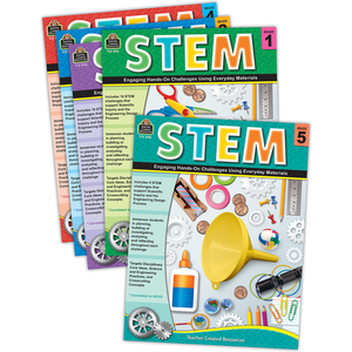 My new elementary STEM series from Teacher Created Resources arrives in March! I designed these hands-on challenges to get kids thinking, doing, and having fun while experiencing phenomena, discovering new concepts, and designing solutions to compelling problems. Each challenge is designed for students to experience either the engineering design process or scientific inquiry. • In the engineering challenges, students create a solution to a problem and evaluate the effectiveness of their solutions. They use the engineering design process—ask, imagine, plan, build, test, improve—to arrive at the best solution they can under the constraints of the challenge. In these challenges, students must think creatively, meaning the final solutions will (and should) vary widely; there are no “right” answers. Solutions are evaluated by the class based on how well they solve the given problem. • For scientific inquiry challenges, scaffolding is provided to give students experience in exploring questions, testing hypotheses, recording data, and evaluating evidence. Although not as student-driven or open-ended as the engineering challenges, in most of these challenges the questions and hypotheses are created by students (within the parameters of the challenge), so they are deciding what to test and how to test it. They set up and carry out their planned tests, record and analyze data, and come to their own conclusions, which are then evaluated by the class. As Adam Savage of the Mythbusters says: “The only difference between (messing) around and science is writing it down.” Throughout the challenges, students record their thoughts, ideas, procedures, data, and more on paper. In some cases they answer questions that help lead them through an investigation or set them up for success in a challenge. At other times they record data as they collect it, and then analyze to come to a conclusion or result. And in engineering challenges they do their planning and evaluating on paper. At the end of each challenge, students write about their experience by answering reflection questions to pull everything together. Because I always write with teachers in mind, the challenges call for classroom supplies you probably already have, recycled materials (think paper towel tubes and scratch paper), and sometimes a few items from the dollar store. For many of the challenges the material choices are quite flexible, making it easy to use materials you already have. 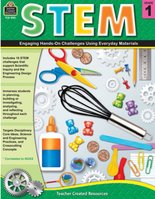 First graders engineer bubble wands, marble obstacle courses, and bridges to help the chicken cross the road! 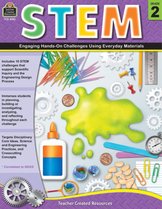 Second graders test invisible inks, paper helicopters, and every kid’s favorite...SLIME!  Third graders crash test toy cars, flip bottles, and engineer cup towers. 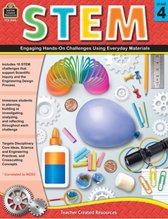 Fourth graders engineer solar heaters to make s’mores, create games using the five main human senses, and (my favorite) engineer giant bird beaks to eat giant food! 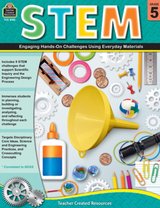 Fifth graders crate games using Bernoulli’s principle, and engineer green roof models, water filters, and marble rollercoasters. Bonus: I just finished the Kindergarten book, which will be out late next year!
Pop Culture Classroom has created a FREE, bi-weekly comic strip called Colorful History, with the goal of educating students about significant and diverse characters and events from Colorado’s history. Many of these pieces would be great in classrooms across the country, such as the comics on astronaut Scott Carpenter, diplomat Madeleine Albright, and Hattie McDaniel, the first African-American Academy Award winner. Included alongside each full color two-page comic is a teacher guide, and many of them include scripts and artist roughs as well. See all of the resources HERE.
I will be creating teacher guides for these great comics over the next few months. My first lesson is for the comic about pioneer Francis Wisebart Jacobs, founder of what is now the United Way. Click on an image to see the comic and resources. AMP! has posted a few new lessons I wrote for their graphic novels.
As always, these books are highly engaging and tons of fun! The lessons are Common Core aligned and help students analyze both text and images in these graphic novels. You can access all of AMP's free educator resources at http://www.ampkids.com/guides.
This year, SDCC hosted four days of panels and workshops for educators and librarians at the San Diego Public Library. I put together some great panel discussions for teachers on Saturday. For each panel, I've created a list of great comics and graphic novels, and some slides for the panels I moderated - click the links to download. I am still trying to chase down a link to the videos for these panels - will update when I get them!
10:00 - 11:00 Once Upon a Time: Teaching Fables, Fairy Tales, and Myths with Comics and Graphic Novels Chris Duffy (editor of Fable Comics, Fairy Tale Comics, Nursery Rhyme Comics, and the SpongeBob Comics series), Alexis Fajardo (Kid Beowulf), Ben Hatke (Mighty Jack), Kel McDonald (Cautionary Fables and Fairy Tales), and Trina Robbins (Pretty in Ink, Wonder Woman), and moderator Tracy Edmunds, M.A.Ed. (Graphic Novels are Elementary!) Shiley Special Events Suite, San Diego Central Public Library Fairy Tale, Myth, & Fable Comics List Fairy Tale, Myth, & Fable Slides 11:00 – 12:00 Teaching History with Graphic Novels Nathan Hale (Nathan Hale's Hazardous Tales), Jonathan Hennessey (The U.S. Constitution: A Graphic Adaptation, The Comic Book Story of Video Games), Tim Smyth (High school history teacher), Illya Kowalchuk, M. Ed. (Pop Culture Classroom), Amy Chu (Publisher, Alpha Girl Comics), and moderator Tom Racine, moderator (Tall Tale Radio) Shiley Special Events Suite, San Diego Central Public Library History Comics and Graphic Novels List 1:00 – 2:00 Teaching STEM with Comics Paige Braddock (Stinky Cecil, Creative Director Schulz Studio), Jim McClain (Solution Squad), Betsy Gomez (CBLDF), Jen Aprahamian (CTO of VINA), Mairghread Scott (Writer, Transformers: Till All Are One, Guardians of the Galaxy), Rebecca Thompson, PhD (Head of Public Outreach, American Physical Society), and moderator Tracy Edmunds, M.A.Ed. (Graphic Novels are Elementary!) Shiley Special Events Suite, San Diego Central Public Library STEM Comics and Graphic Novels List STEM Panel Slides And Jim McClain will be presenting a workshop on teaching math with Solution Squad. You won't want to miss this! 2:00 – 3:00 Solution Squad: Teaching Math Through Comics — Veteran teacher Jim McClain presents Solution Squad, an all-ages comic featuring superheroes with powers and names based on math concepts. There is math embedded in every single page of the 32-page comic book. This workshop will take you through Solution Squad #1 step-by-step, showing how the digitally projectable and print comics can be used for direct instruction, as mnemonics for vocabulary and as springboards for deeper mathematical conversations and explorations that will stick with students throughout their entire school careers. Graphic novels are rapidly gaining in popularity with students, as well as with librarians and teachers. The quality and choices of graphic novels available for the classroom are rich and diverse. Did you know that both Newbery and Caldecott honors have been awarded to graphic novels? Comics are "real" reading! Teachers are beginning to see that research and practice support the use of graphic novels in the classroom. Comics and graphic novels:
I created "Graphic Novels are Elementary!" to help teachers and librarians make the most of graphic novels in the elementary grades. All of these resources are available in my online Teachers Pay Teachers store.
When I was in school, kids would slip comics inside their textbooks to read on the sly. Comics were considered ‘recreational reading’ at best, but usually adults saw them as mind-numbing tripe. You certainly would never have seen one used in reading instruction. Times have changed, and as comics and graphic novels become more accepted as a legitimate form of art and literature, they are making their way into classrooms. Many parents and teachers, however, still remember the stigma that comics had when they were young and are asking, “Why should kids read comics?” The biggest reason that kids should read comics and graphic novels is because they want to. Many young readers, when confronted with solid pages of text, become intimidated and overwhelmed and just give up. Give the same reluctant reader a thick, juicy graphic novel like Jeff Smith's Bone or Raina Telgemeier's Smile and they dive in eagerly, devouring every page. With many struggling readers motivation is the key, and comics are motivating. There is emerging research that shows that comics and graphic novels are not only motivating, but support struggling readers, enrich the skills of accomplished readers, and are highly effective at teaching sometimes ‘boring’ material in subject areas such as science and social studies. The following excerpts from the excellent Scholastic Graphix Teaching Guide sum things up well. Graphic novels can … help improve reading development for students struggling with language acquisition, as the illustrations provide contextual clues to the meaning of the written narrative. They require readers to be actively engaged in the process of decoding and comprehending a range of literary devices, including narrative structures, metaphor and symbolism, point of view, and the use of puns and alliteration, intertextuality, and inference. Reading graphic novels can help students develop the critical skills necessary to read more challenging works, including the classics. Emergent and Beginning Readers Young children are just beginning to learn that concrete objects can be represented in different ways. For example, a dog is a furry animal that wags its tail and barks. It can be represented by a photograph of a dog, a stylized or ‘cartoon’ illustration of a dog, or letters forming the word ‘dog’. Most children begin to make this transition from concrete to abstract through picture books, with a single illustration on each page. Sequential art (wordless comics) can take learning to the next level, asking kids to follow a sequence of illustrations that form a story. A book like Andy Runton's Owly provides an opportunity for young children to ‘read’ the pictures in order and follow the story. They love to verbalize the story, which reinforces the concept that ink on a page can be translated into ideas and words. In addition, the characters communicate using symbols, providing another opportunity for children to make the connection between abstract images and language. Before a child is ready to read text, sequential art can give them practice in making meaning from material printed on a page, tracking left to right and top to bottom, interpreting symbols, and following the sequence of events in a story. Sequential art provides plenty of opportunity for connecting the story to children’s own experiences, predicting what will happen, inferring what happens between panels, and summarizing, just as you would do with a text story. The advantage to sequential art is that children don’t need to be able to decode text to learn and practice comprehension skills. Once a child begins to decode text, the comic format enables them to read much more complex stories than is possible with traditional text and illustration. Imagine what this page from Aaron Renier's Spiralbound would look like as text: It would take pages of text to convey all the information in the last panel alone! With comics and graphic novels, beginning readers can enjoy more emotion, action, and detail than in a typical ‘See Jane run’ story. When kids read enjoyable, complex, compelling stories they are motivated to read more, so graphic novels can be a great stepping stone to longer text works. This is also an advantage when encouraging struggling or reluctant readers or English learners – they can enjoy great stories and practice high-level reading comprehension skills even at a lower text reading level. Learning Through Comics In addition to the power of comics to teach and extend literacy skills, the comic format is also a powerful tool for teaching content! The Three E's of Comics, first noted by Josh Elder, founder of Reading With Pictures, categorize the strengths of comics as learning tools into Engagement, Efficiency, and Effectiveness. Engagement Comics require readers to actively engage in making meaning from text and images. Neither the images nor the text carry meaning alone; the reader must interpret the interplay between them to understand the story. Author Sherman Alexie describes his experience learning to read by using the interdependence of text and images in comics: At the same time I was seeing the world in paragraphs, I also picked up that Superman comic book. Each panel, complete with picture, dialogue and narrative was a three-dimensional paragraph. In one panel, Superman breaks through a door. His suit is red, blue and yellow. The brown door shatters into many pieces. I look at the narrative above the picture. I cannot read the words, but I assume it tells me that "Superman is breaking down the door." Aloud, I pretend to read the words and say, "Superman is breaking down the door." Words, dialogue, also float out of Superman's mouth. Because he is breaking down the door, I assume he says, "I am breaking down the door." Once again, I pretend to read the words and say aloud, "I am breaking down the door" In this way, I learned to read. --Sherman Alexie, Superman and Me, Los Angeles Times The dual-coded nature of comics also creates depth and complexity that isn't possible in text alone. In this page from Rapunzel's Revenge by Shannon and Dean Hale and Nathan Hale, placement in time and parallel story structure are shown through the style and positioning of the panels and images. How does the artist make clear which scenes took place in the past? Not only does he show Rapunzel clearly at a younger age, but also uses desaturated colors and line work to give the images a fuzzy, memory-like quality. These panels are used not only to show Rapunzel's returning memories, but also to explicitly draw parallels between the past and the present; the mirroring of the characters' positions in the panels shows that they have been through this experience before. Hale even goes so far as to tie the matching panels together in a common background panel. Note also the parallel of the mother dropping her bucket of water when she realizes that this is her long-lost daughter, and Rapunzel dropping her pink party hat (which she had been using as a cup for water) when she begins to remember her mother. Efficiency The comic format conveys a great deal of information in a short time, while allowing the reader to control the pace of reading and rereading. The comics format is highly efficient at conveying large amounts of information in a short amount of time. They work so well, in fact, that it's a standard means of communicating lifesaving information. And images in sequence have been used for ages to communicate stories and information efficiently without text. While readers can gain a great deal of information quickly through the visual nature of comics, they are also able to control the pace of their learning. Jonathan Hennessey, author of The United States Constitution: A Graphic Adaptation, and The Gettysburg Address: A Graphic Adaptation, explains: I think the interplay of words and pictures has a way of engaging many aspects of the human mind at once, and can create a powerful experience of interacting with emotions and ideas. Unlike movies, however, the reader can go at his own pace. He can be more involved and active in the experience. In one image or composition, the reader can linger over the potential significance of small details without having the sense that the narrative flow has been disrupted. No matter how much time you spend inside one panel, you never feel like the story has stopped or altered tempo. Not the way you would if you pressed “pause” while watching a video. So it’s ideal for students and teachers. It has the vividness of the moving image and the complexity of text. National Ambassador for Children's Literature and graphic novelist Gene Yang: …in comparison to other visual media like film and animation, graphic novels are permanent. …You see, language and actions in film and animation are time-bound. They're on screen one minute and gone the next. …Graphic novels on the other hand, have a 'visual permanence' to them. Time progresses only as quickly as your eyes move across the page…. It doesn't matter how quickly I 'say' the lecture. What matters is how fast you choose to read it! The rate of information-transfer is firmly in your control! Effectiveness
Processing text and images together leads to better recall and transfer of learning. Recent studies have shown that students who read text and images together have better attitudes toward learning, recall information more effectively, and transfer their learning to new problems.
Many teachers would like to use graphic texts in their classrooms, but need to convince their administrators of the value these complex texts can provide in instruction and learning, and how they can be used to address Common Core State Standards. I created a presentation for San Diego Comic-Con in which specifically and thoroughly addresses this issue.
The Common Core State Standards lay out specific guidelines about “text complexity,” and graphic novels are mentioned specifically within the range of text types for grade 5 and grades 6-12. “Integrating Comics into the Common Core” shows how graphic texts meet CCSS text complexity requirements, including levels of meaning, structure, language conventionality and clarity, and knowledge demands, with specific examples of each from some of the best graphic texts available. Click below to download a PDF version of this resource. Through Reading With Pictures curriculum services, I create teacher's guides for Andrews McMeel's amp! Comics for Kids line to help teachers get the most out of these kid-favorite comics in the classroom. Titles include:
All of my teacher's guides for AMP! Kids graphic novels are available free at http://www.ampkids.com/guides. Think Earth is a non-profit organization that helps communities maintain a sustainable environment through education. I am fortunate to be working with a talented team of educators and writers to update the Think Earth Environmental Education Curriculum for the 21st century.
We have revised the K-3 curriculum, including teacher guides and student materials, and made them available online so that teachers around the world can access the units for free at www.thinkearth.org/curriculum. We are currently working on the units for grades 4–8 and expect to have those online by the end of 2017. I have also been involved in the redesign and relaunch of the Think Earth Foundation website, marketing and publicity for the new curriculum, and management of the Foundation’s social media presence. |
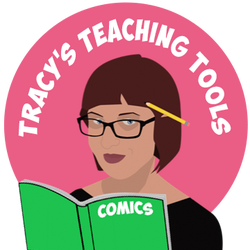
Visit my Teachers Pay Teachers store for more graphic novel classroom resources!
About Tracy
Tracy Edmunds is a teacher and educational consultant specializing in curriculum development, editing, and writing, focusing on the areas of comics and science. Archives
July 2023
Categories |
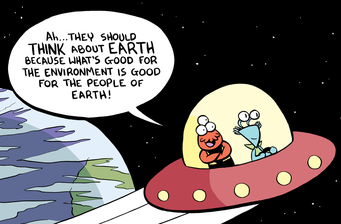
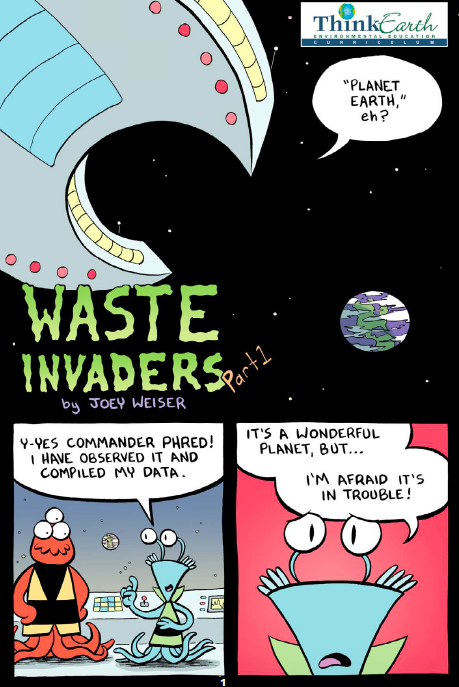
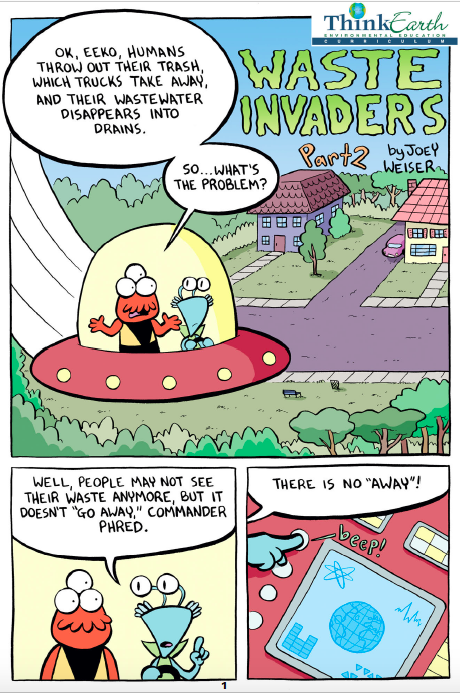
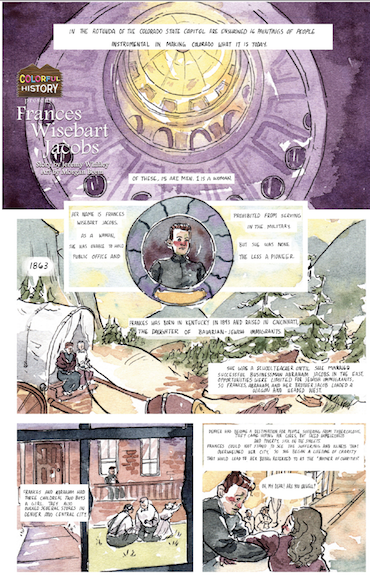
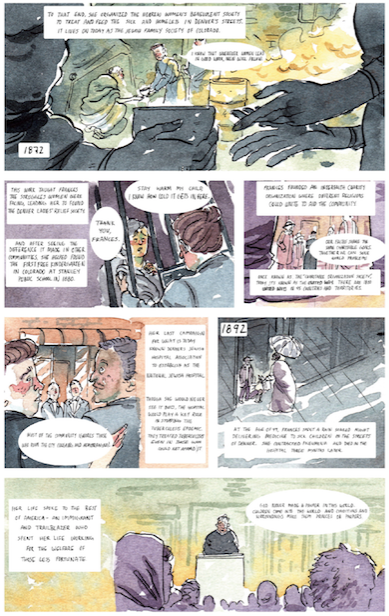

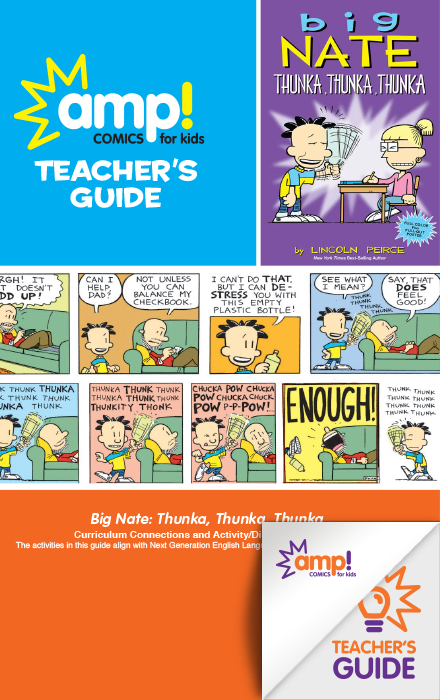
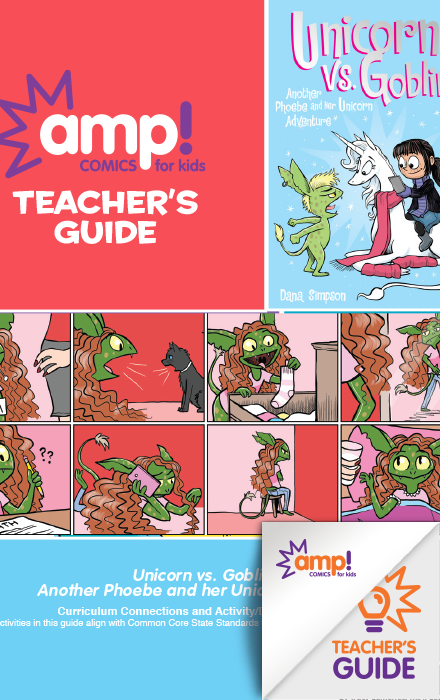
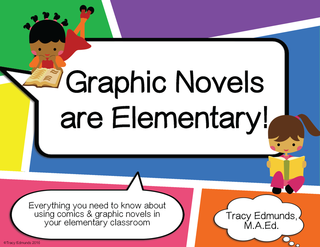
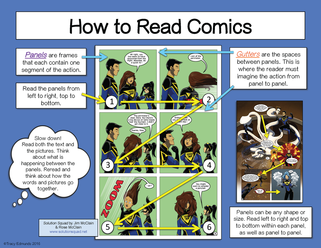
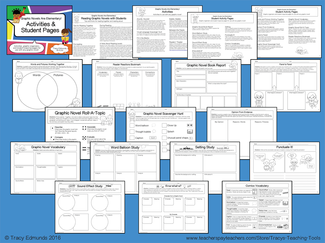

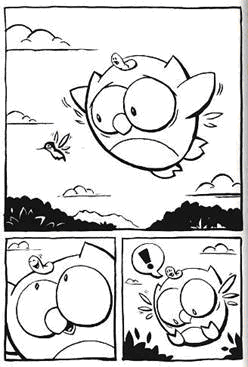
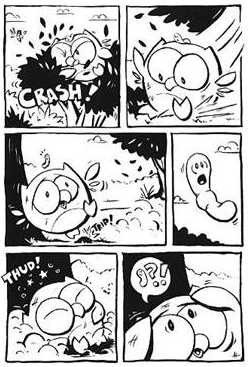
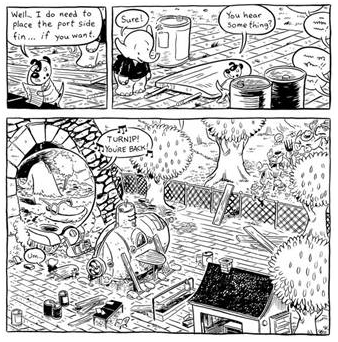

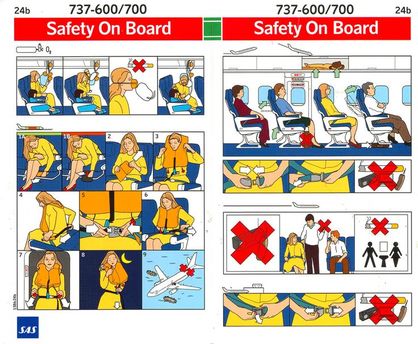

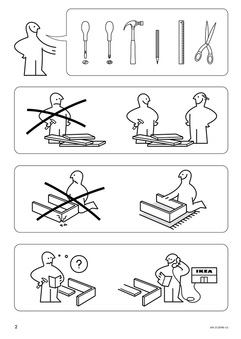
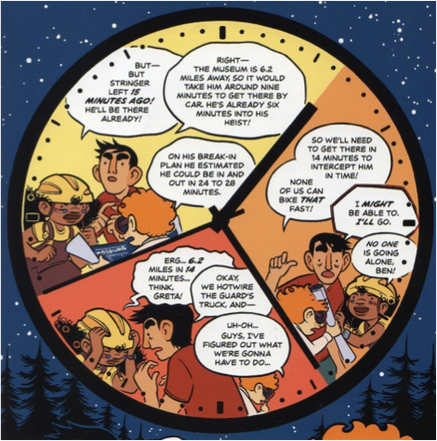
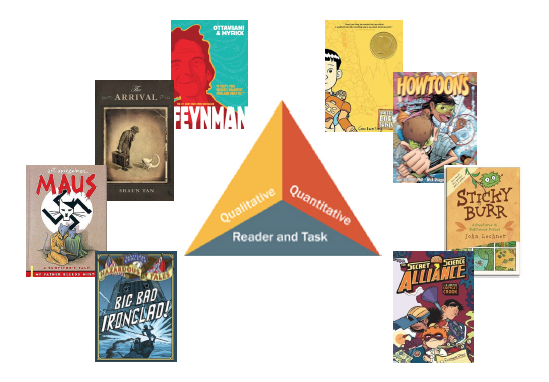
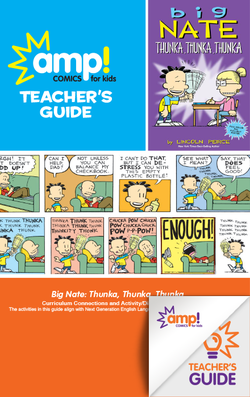

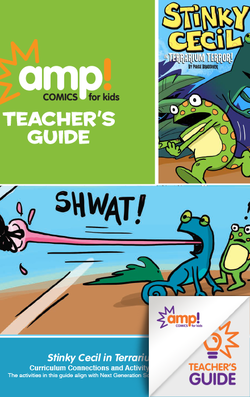

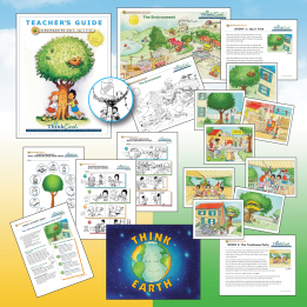
 RSS Feed
RSS Feed